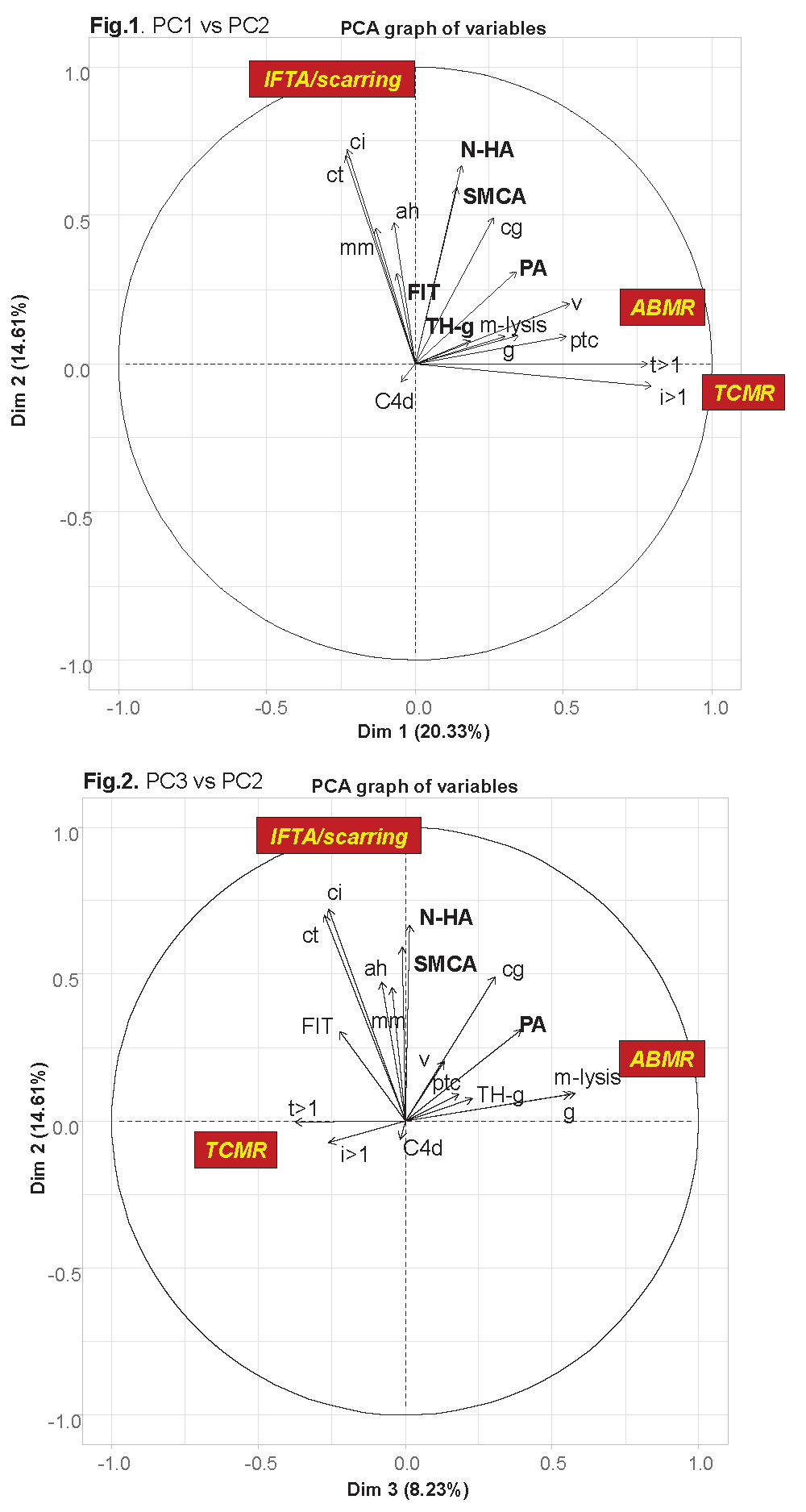Defining New Arterial and Arteriolar Lesions Accompanying Transplant Glomerulopathy: Potential Additions to the Histologic Assessment of ABMR
1Pathology, Medical University of Warsaw, Warsaw, Poland, 2Transplantation Medicine, Nephrology and Internal Diseases, Medical University of Warsaw, Warsaw, Poland, 3Immunology, Transplantation Medicine and Internal Diseases, Medical University of Warsaw, Warsaw, Poland, 4Infectious Diseases, Hepatology and Liver Transplantation, Pomeranian Medical University, Szczecin, Poland, 5Alberta Transplant Applied Genomics Center, Edmonton, AB, Canada, 6Alberta Transplant Applied Genomics Centre, Edmonton, AB, Canada, 7Pathology, Alberta Transplant Applied Genomics Centre, University of Alberta, Edmonton, AB, Canada
Meeting: 2022 American Transplant Congress
Abstract number: 1410
Keywords: Biopsy, Kidney transplantation, Rejection
Topic: Clinical Science » Kidney » 45 - Kidney Chronic Antibody Mediated Rejection
Session Information
Session Name: Kidney Chronic Antibody Mediated Rejection
Session Type: Poster Abstract
Date: Monday, June 6, 2022
Session Time: 7:00pm-8:00pm
 Presentation Time: 7:00pm-8:00pm
Presentation Time: 7:00pm-8:00pm
Location: Hynes Halls C & D
*Purpose: Transplant glomerulopathy (TG) results from chronic endothelial injury most commonly related to ABMR. Surprisingly, except for PTC, the relation between TG and other vascular lesion hasn’t been defined yet.
*Methods: We retrospectively analyzed 250 graft biopsies with TG and 85 biopsies with no TG but with other chronic lesions present, using Banff 2019 classification with few microscopic parameters added.
*Results: TG was associated with a spectrum of inflammatory and structural changes including 4 vascular lesions not currently included by Banff classification: 1. proliferative arteriopathy (PA), defined by a fibrous intimal thickening without internal elastic lamina multiplication (as distinct from a fibrous intimal thickening with internal elastic lamina multiplication). 2. Non-hyaline arteriolosclerosis (N-HA) 3. Arteriolar smooth muscle cells proliferation (SMCA). 4. Thrombi in glomerular capillaries (THg).
In table 1, PA, N-HA, and SMCA were all associated with TG; THg was not.
Principal component analysis (PCA) showed PA and THg to be ABMR-related, whereas N-HA and SMCA were more related to scarring (Fig.1).
In survival analysis TG and PA were independent risk factors for graft loss (HR: 5.7 and 1.5 respectively, P<0.05).
*Conclusions: PA is a distinct vasculopathy that is associated with TG and ABMR, has prognostic value, and should be included as an ABMR-related lesion. The extraction of PA from Banff ‘cv’ lesion increases the diagnostic power of the histologic graft examination and adds important prognostic information.
To cite this abstract in AMA style:
Perkowska-Ptasinska A, Deborska-Materkowska D, Ciszek M, Myslak M, Chang J, Reeve J, Halloran P. Defining New Arterial and Arteriolar Lesions Accompanying Transplant Glomerulopathy: Potential Additions to the Histologic Assessment of ABMR [abstract]. Am J Transplant. 2022; 22 (suppl 3). https://atcmeetingabstracts.com/abstract/defining-new-arterial-and-arteriolar-lesions-accompanying-transplant-glomerulopathy-potential-additions-to-the-histologic-assessment-of-abmr/. Accessed December 14, 2025.« Back to 2022 American Transplant Congress


